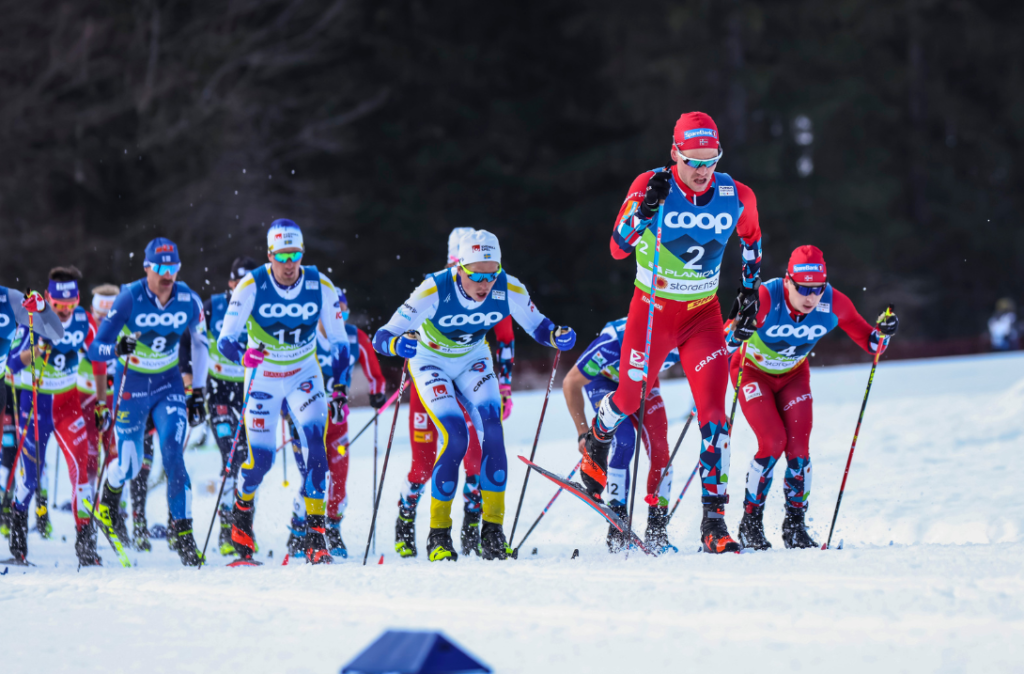The traditional sports in the snow fight for their future
There were - as always in sports - winners and losers at the Nordic World Ski Championships. And because there are only three places available on the podium, the number of the disappointed was traditionally greater than the number of those who could rejoice over medals. In this respect, nothing new from the ski winter. But: There is a lot going on in Nordic skiing and some of it is worrying.
Let's start with the sporting details. Norway remained the measure of all things in the Nordic field also at the festivities in Slovenia. Because the Russians were not allowed to participate for well-known reasons, the Scandinavians dominated the men's cross-country skiing at will, winning in all decisions. In the Nordic combined, too, the flag of the Scandinavians was always pulled up to the top at all award ceremonies - the serial winners Gyda Westvold-Hansen and Jarl Magnus Riiber in particular appeared too dominant. But in Norway they will still look critically at the World Championships, the dominance in women's cross-country skiing was lost, Sweden's women are currently the measure of all things and in ski jumping they had expected more. Because the next title fights are a home game for the inventors of Nordic skiing, in 2025 the World Championships will be held in Trondheim, one can expect that the measure of all things in this sport wants to appear even stronger at the competitions in the Granasen area than in Slovenia.
The Germans can also return satisfied from the valley of the hills in Planica. A dozen medals, neatly distributed over all three sections, i.e. run, combination and jump, are a good proof of the Germans' performance. Particularly striking: Katharina Althaus, with 3 gold and bronze medals the queen of the World Championships, and the only 17-year-old combination princess Nathalie Armbruster. Germany shone above all as a team, both across disciplines and in the individual team competitions. In the cross-country, the women confirmed their top result of the previous year from the Olympic Games in Beijing with silver in the relay, the men provided a real sensation of the World Championships and the most surprising medal for the DSV with bronze over 4×10 km. Only the ski jumpers, who were nevertheless on target with silver and bronze from the normal hill and also contributed their part to the mixed gold, didn't really get flying - delivered a mirror image of the results of the season so far.
But what else remains of this World Cup? Many question marks! There is the lack of spectators, because also in Slovenia they had the idea to consider this world championship as a cow that could be milked to death. But the audience decided against horrendous ticket prices and overpriced hotel beds and simply stayed away - apart from the two men's competitions on the large hill, which with around 8,000 visitors per evening did not overflow with fans either.
The weather mostly played along at an altitude of 1,000 meters, but Planica also lived off the snow reserves from the Karawanken, because in sunshine the temperatures could sometimes climb into the double-digit plus range. Organizationally, many things went well, but transport problems remained a nuisance until the final day. Basically, however, Nordic skiing has to ask itself where the journey should go. Yes, the next world title competitions will certainly take place in Scandinavia with a certain amount of snow. But if Falun 2027 follows on from the 2015 edition, in four years we will once again see a pure cross-country skiing world championship; ski jumping and Nordic combined won't attract any fans in Sweden. And with ever warmer winters, future hosts will probably ask themselves whether a bid makes sense or is rather counterproductive, given the escalating costs for modern facilities and the production of artificial snow and the criticism of the resulting lack of environmental compatibility and sustainability.
Last but not least, there is the big problem child of Nordic skiing - the Nordic combined. It should have received the greatest attention in Planica, especially from the World Ski Federation. However, the World Ski Federation managed the feat of completely screwing up the premiere of the mixed team competition due to insufficient preparation. The jumping slope at the ski jump was not prepared. Embarrassing for all those involved, there's no other way to describe it.
Nobody can do anything about the dominance of the two high-flyers from Norway - at most the competition. But if the FIS President describes the sport as "funny" in the run-up to the World Championships, then this should play into the hands of the grandees of the International Olympic Committee, who last summer denied the combined women access to the Olympics and threatened the men with their departure from the Olympic program, as confirmation of their position. Which brings us to what is probably the biggest problem facing the world skiing federation FIS at the moment - and that is its president. You can say what you like about the Swede Johan Eliasch, you can like his ideas or you can dislike them. But it is one of the elementary tasks of an elected leader of a world federation to be present at the major event, at the meeting of the world's best. Eliasch, however, managed the feat of floating in for the official opening, saying a few words of consolation and then disappearing before the first decision was made. This (non-)appearance says more than 1,000 words and raises the question: Quo vadis, Nordic skiing. Not a pretty outlook.
Pictures: K. Voigt Fotografie

